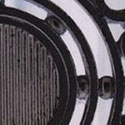
Iron Balloons: Hit Fiction from Jamaica’s Calabash Writer’s Works
Edited by Colin Channer
Akashic Books

Going through my daily chores, I find it easy to fall into a rut. I do the same thing every day because it’s what I did the day before and the day before that. Travel is the absolute best way to break out of those patterns. Going to a foreign land forces me to see, hear, smell, taste and think in different ways. Living in Tampa, the idea of commuting on a bike is pretty exotic. Walking the streets of Amsterdam I can see that biking to work is a viable way of getting around a city. Applying these lessons isn’t as easy as having the revelation, but that’s another story.
When I can’t get away, the next best thing is to pick up some books by writers from other parts of the world. Reading stories that originate in another culture can help open your mind to other ways of thinking. A good example of a book that forces you to look at the world in different ways is Iron Balloons: Hit Fiction from Jamaica’s Calabash Writer’s Workshop. The book is a virtual tour of the Caribbean diaspora. The writers take us to dusty rural communities in Jamaica to expatriates living in America and many points in between. It’s hard to get a handle on such a diverse collection of stories, but editor Colin Channer uses the analogy of putting together a reggae compilation album to describe the book, so I’ll carry over that analogy to my review.
As any music fan knows, compilation albums are a mixed bag of tunes that either strike a chord with the listener or don’t. Iron Balloons opens with several tales that are difficult going for readers unfamiliar with Jamaican patois. I’d compare the first four stories in Iron Balloons to dub reggae tracks. The language is almost familiar, but close to unintelligible. It is very much like the way it’s hard to recognize a dub version of a song, even if you’re familiar with the original. The words look familiar but without knowing the context it’s a struggle to tease out meaning. I had to re-read passages of Rudolph Wallace’s tale, “Siblings,” several times to figure out what he was trying to say. These tales are akin to going through culture shock when you first arrive in a foreign land. Everything is familiar but nothing makes sense.
“How to Beat a Child the Right and Proper Way” finally brings us to familiar ground. The tale is set in New York where the protagonist has lived for years and years. Her voice is still accented but quite understandable to her American coworkers. Colin Channer’s character spells out cultural differences between what she sees as lax American values and the proper way to raise a child. This tale bounces along, alternately humorous and chilling. The middle section of the book is analogous to reggae. The tales have exotic timbres while remaining quite accessible to the general reader.
The book ends with a story best described as a remix. Kwame Dawes’ tale, “Marley’s Ghost” quite literally mixes the stories of Bob Marley’s final days with the tale of a mentally disturbed man who thinks Marley’s ghost possesses him. The story shifts times, locations and characters freely, making the narrative disorienting but also quite interesting.
Like most compilation albums, some of the “songs” are hits and others miss the mark. For me, the hit to miss ratio on Iron Balloons was about 50/50. I thought this was remarkably good after reading the introduction where Channer describes the Calabash Writer’s Workshop as a project to teach prose writing in a country without a tradition of literacy and fiction writing. The introduction and the book’s title suggest that most of the work in this anthology comes from the students. At the end of the book though, we get to the author biographies and learn that most of the authors are instructors at the Calabash Writer’s Workshop. In a way, that fits perfectly with Channer’s analogy of Iron Balloons being like a reggae compilation album. I’ve had many a compilation where close examination reveals that all of the tracks were performed by the same studio band with a different group name for each track. It’s part of the tradition.












